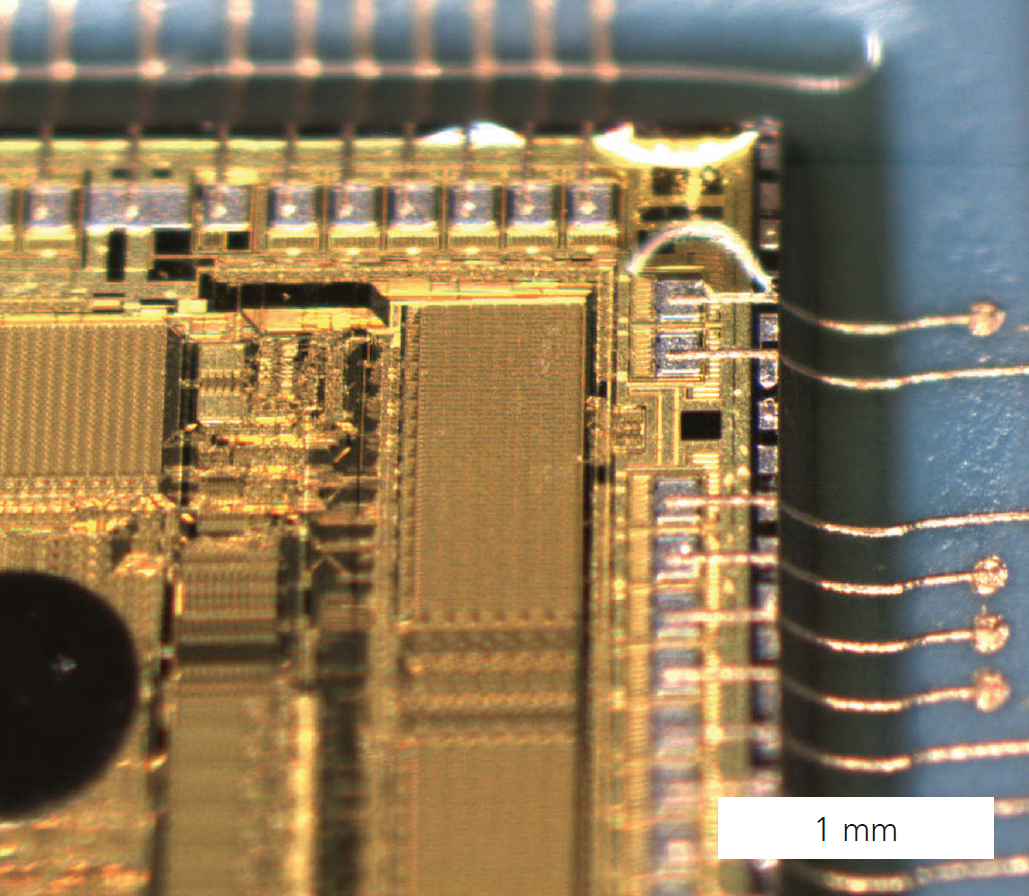
Inks and pastes for functional layers
Current research



Functional layers are often printed on ceramic 2D substrates. Thin glass and polymer tapes or papers are increasingly used as carrier material as well. Examples of such applications are touch displays, RFID tags, strain gauges, chemical and physical sensors or measuring bridges. The printing methods – both digital and mask-based – now offer high resolution, which enables miniaturization of the functional layers not only on the 2D substrates but also on 3D structures.
Materials selection and preparation as basis
In order to optimally adapt functional layers to their application, Fraunhofer IKTS has decades of experience on inorganic powders and with regard to selecting the organic components (solvents, polymers, additives). The inorganic basic components of suspensions used for printing can consist of various materials classes, ranging from ceramic to metal oxides or even noble metal powders and types of glass. At Fraunhofer IKTS, different routes for adapting particles to their respective application are available. For functional inks, noble metal nanoparticles are synthesized directly at IKTS. For synthesis of gold, platinum, silver and others, the particles of these metals are influenced in a targeted way. Another approach consists in crushing powders to precise particle sizes through high-energy grinding, using disk mills or jaw crushers for coarse (up to the mm range), planetary ball mills for medium-range (up to 100 μm) and agitator bead mills for fine (up to 5 μm) powders. The achievable particle sizes of about 500 nm can be used in both functional inks for inkjet or aerosol-jet printing and pastes. In order to apply paste-like suspensions by screen or mask printing, (micro-)dispensing, jet-dispensing and roll coating, much coarser particles (up to 75 μm) are milled and processed.
Suitable organic composition
The organic components for the suspension are selected depending on substrate material, firing technology, final layer geometry and characteristics. Polymers are dissolved in various solvents in order to attain precisely the properties needed for the selected printing method. Thus, it is possible to adapt the viscosity from 1 to 100 000 Pa*s depending on the shear rate from 0.01 to 100.000 s-1. The organic composition required for dispersion is chosen based on a comprehensive data matrix developed experimentally at IKTS. This matrix includes information on viscosity, evaporation rate and wetting behavior. For functional inks, the main aspects for polymer selection are wetting behavior and adhesion with a view to retaining good adhesive properties directly after drying. Polymers for pastes are selected according to the intended error-free printing image and geometric factors, for example high aspect ratios. Another aspect of the polymer composition concerns the firing conditions and subsequent use of the printed structure: If the firing is done under an inert atmosphere or at especially low temperatures, different polymers are selected than with applications where the polymers are supposed to remain in the printed layer (i.e. when electronics are printed onto flexible substrates). Furthermore, additives are used in the suspension to stabilize the particles and influence printability.
Preparation of the suspension
The main step of suspension preparation is the dispersion of the selected materials in the organic or water-based printing vehicle. In the process, the agglomerates existing in the powder are broken up, the different inorganic components are homogenously mixed, solids are wetted with the organic printing stock and the final viscosity is adjusted with additives. Depending on the suspension content, application, solid content and application technique, Fraunhofer IKTS has different pieces of equipment at hand: dissolvers, bead mills, mortar grinder, three-roll mills, agitator bead mills and centrifugal mixers. The quality of a dispersed suspension becomes apparent in the long-term behavior with respect to the segregation of the inorganic components of the printing vehicle and their sedimentation.
Characterization through all process steps
At Fraunhofer IKTS, all process steps from the powder to the printed functional layer are extensively characterized, starting with the particle size distribution, form and specific surface of the materials used, and followed by the rheological properties, which are determined using suitable measuring instruments (conventional cone-plate rheometer, capillary rheometer, cylinder-cup setup for inks). The rheological measurements allow conclusions about both viscosity and shelf life, as well as levelling properties. The wetting of the substrate surface and the dripping behavior of inks from the printing nozzle are characterized depending on the temperature. Additionally, printability is tested with special test structures. For functional inks, printing width and applied layer thickness are determined. For functional pastes, analysis is performed on specific test structures focusing on line-space ratio, aspect ratios of the printed layers, minimum line widths as well as the homogeneity of solid areas and levelling properties. Finally, the applied functional layers are also comprehensively characterized. Various test methods are available for this purpose, ranging from the cross-cut or wire-peel test (layer adhesion), to the white light interferometer (layer geometry), scanning electron microscopy (layer composite) and electrical/ electrochemical characterization.
360° service for the development of functional inks and pastes
With these competencies, Fraunhofer IKTS covers the entire range of development for functional inks and pastes for various applications: from the selection or synthesis of the basic materials through the adjustment of specific properties, the selection of the organic composition, to the preparation of the suspension, adapted to the suitable printing method. The characteristics of the individual components of ink and paste up to the finished functional layer are constantly monitored throughout this process.

